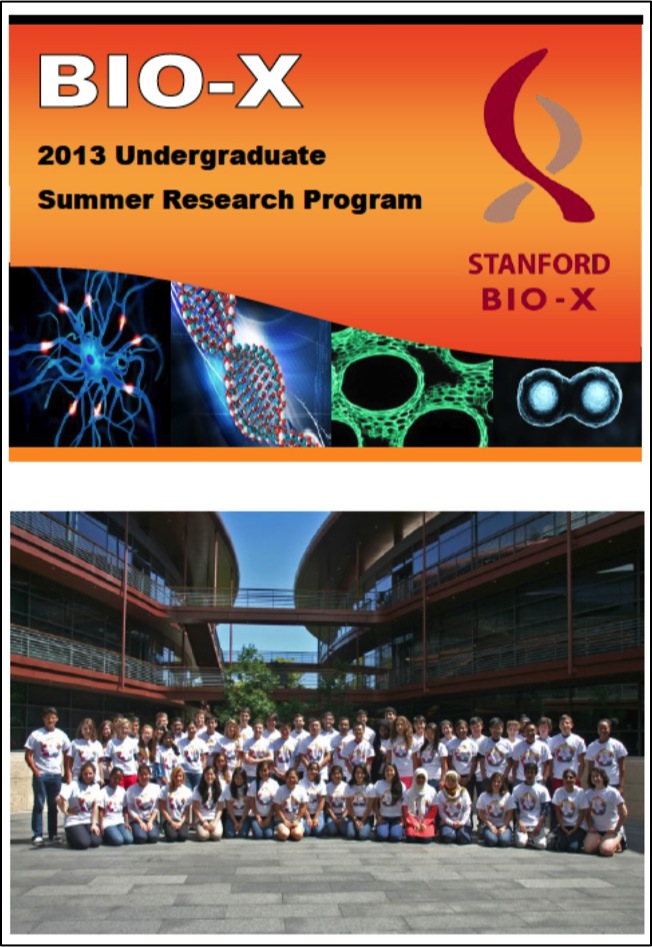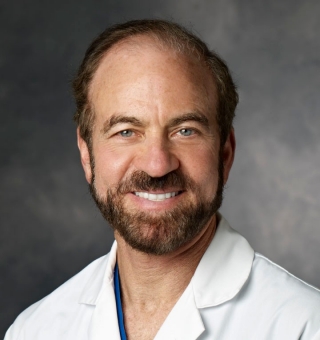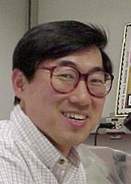
Welcome to the biweekly electronic newsletter from Stanford Bio-X for members of the Bio-X Corporate Forum. Please contact Dr. Hanwei Li, the Bio-X Corporate Forum Liaison if you would like to be added or removed from this distribution list, or if you have any questions about Stanford Bio-X or Stanford University.
Highlights
** On October 9, 2013, Bio-X celebrated the 10th Anniversary of the James H. Clark Center, the hub of Bio-X. Check out CLARK CENTER @ 10X as well as the Bio-X Timeline over the last 15 years!!
** Check out the article by Stanford President John Hennessy in the Nov/Dec 2013 issue of the Stanford Magazine on Bio-X and the Clark Center, "A Cauldron of Innovation".
Seed Grants
**SAVE THE DATE: The next Bio-X Interdisciplinary Initatives Seed Grants Program Symposium is taking place on Wednesday, August 27, 2014 in the Clark Center Auditorium from 1-4 pm, followed by a poster session of various research within the Bio-X community during the reception in the Courtyard. Go below to EVENTS or click here to view the entire agenda with 8 oral presentations on awarded Bio-X Seed Grant projects.
**UPDATE: Bio-X has closed the 7th RFP for its IIP Seed Grants, and review of the 141 Letters of Intent is underway!
 SEED GRANTS FOR SUCCESS - Stanford Bio-X Interdisciplinary Initiatives Program (IIP)
SEED GRANTS FOR SUCCESS - Stanford Bio-X Interdisciplinary Initiatives Program (IIP)
The Bio-X Interdisciplinary Initiatives Program represents a key Stanford Initiative to address challenges in human health. The IIP awards approximately $3 million every other year in the form of two-year grants averaging about $150,000 each. From its inception in 2000 through the fifth round in 2010, the program has provided critical early-stage funding to 114 different interdisciplinary projects, involving collaborations from over 300 faculty members, and creating over 450 teams from five different Stanford schools. From just the first 5 rounds, the IIP awards have resulted in a 10-fold-plus return on investment, as well as hundreds of publications, dozens of patents filed, and most importantly, the acceleration of scientific discovery and innovation.
In 2012, Stanford Bio-X selected 23 new seed grant projects as the winners of the 6th round. Please go here to view the list of awardees, along with the titles of their projects and the abstracts of the research. Competition was intense as the awardees were chosen from 118 Letters of Intent (LOIs). Selection criteria included innovation, high-reward, and interdisciplinary collaboration. (To view the 114 other IIP projects that have been funded from the first 5 rounds, please click here.) In addition, SANOFI has also funded 4 new Bio-X IIP Seed Grant projects from round 6!
We are cultivating and are highly successful in building meaningful collaborations with numerous corporate colleagues. New collaborations through our seed grant projects are highly encouraged. To learn about how to get involved, please contact Dr. Hanwei Li or Dr. Heideh Fattaey.
IIP Seed Grants-Related Events
** On Monday, March 3, 2014, Bio-X had a Poster Session, featuring 105 different posters from research by all scientists within the Stanford Bio-X community. Over 250 people attended the session, which allowed for an excellent venue to discuss science and research with colleagues from both academia and industry.
** On Monday, August 26, 2013, Bio-X had its second annual IIP Symposium of the year at the Clark Center, which highlights projects that exemplify the Stanford Bio-X mission of crossing boundaries to bring about interdisciplinary research and solutions in the field of life bioscience. The symposium was a huge success with over 300 people attending this event, which included 8 oral presentations and 136 poster presentations. Recorded talks from the symposium will be uploaded soon. If you'd like to view the talks for previous symposia through the years, please click here.
Fellowships
**UPDATE: Bio-X has recently announced its 19 new fellows for the 10th year of the Bio-X Fellowships!!
Every year, graduate students and postdoctoral scholars of Bio-X affiliated faculty are highly encouraged to apply for the Bio-X Fellowships, which are awarded to research projects that are interdisciplinary and utilize the technologies of different fields to solve different biological questions. Students are encouraged to work collaboratively with professors of different departments, thus creating cross-disciplinary relationships among the different Stanford schools. Our fellows have conducted exciting research, resulting in publications in high-impact journals and have been offered excellent positions in industry and academia.
To date, with the 19 new awardees, Stanford Bio-X has a total of 173 Fellows.
You can view the numerous Fellowship projects that have been awarded over the years as well as oral presentations from previous symposiums here.
**UPDATE: The 9th annual Bio-X USRP is currently underway with this year's 65 new awardees!!
 BIO-X UNDERGRADUATE SUMMER RESEARCH PROGRAM
BIO-X UNDERGRADUATE SUMMER RESEARCH PROGRAM
The Bio-X Undergraduate Summer Research Program supports undergraduate research training through an award designed to support interdisciplinary undergraduate summer research projects. The program is an invaluable opportunity for students to conduct hands-on research, learn how to carry out experiments in the laboratory, and develop the skills to read and analyze scientific literature. This program is eligible to Stanford students who want to work in the labs of Bio-X affiliated faculty.
To date, with 65 new awardees from 154 applications this year, 306 students have been awarded the opportunity to participate in the Bio-X Undergraduate Summer Research Program.
Participating undergraduates are also required to present poster presentations on the research that they've conducted during the program. Please click here for title lists of past posters that our undergraduates have presented.
Many fruitful collaborations and relationships have been established with industry through fellowships. Please contact Dr. Hanwei Li or Dr. Heideh Fattaey if you'd like to learn more about how to get involved with these fellowship programs.
News
Stanford bioengineer named a top innovator by Technology Review
Bio-X Affiliated Faculty Manu Prakash
Technology Review has named Manu Prakash, assistant professor of bioengineering, to its annual TR35 list honoring the year’s top young innovators. The magazine honored Prakash for greatly reducing the cost of scientific exploration through his numerous inventions such as a 55-cent folding microscope and a $5 chemistry lab. "In one part of our lab we've been focusing on frugal science and democratizing scientific tools to get them out to people around the world who will use them," Prakash said in April after winning a $50,000 award to further develop his chemistry set. "I'd started thinking about this connection between science education and global health. The things that you make for kids to explore science are also exactly the kind of things that you need in the field because they need to be robust and they need to be highly versatile."
 Targeted brain stimulation aids stroke recovery in mice, scientists find
Targeted brain stimulation aids stroke recovery in mice, scientists find
Bio-X Affiliated Faculty Gary Steinberg
When investigators at the Stanford University School of Medicine applied light-driven stimulation to nerve cells in the brains of mice that had suffered strokes several days earlier, the mice showed significantly greater recovery in motor ability than mice that had experienced strokes but whose brains weren’t stimulated. These findings, published online Aug. 18 in Proceedings of the National Academy of Sciences, could help identify important brain circuits involved in stroke recovery and usher in new clinical therapies for stroke, including the placement of electrical brain-stimulating devices similar to those used for treating Parkinson’s disease, chronic pain and epilepsy. The findings also highlight the neuroscientific strides made possible by a powerful research technique known as optogenetics.
Researchers uncover cancer-causing mechanism behind powerful human oncogene
Bio-X Affiliated Faculty Dean Felsher
A protein present at high levels in more than half of all human cancers drives cell growth by blocking the expression of just a handful of genes involved in DNA packaging and cell death, according to a new study by researchers at the Stanford University School of Medicine. The researchers found that the protein, called Myc, works through a tiny regulatory molecule called a microRNA to suppress the genes’ expression. It marks the first time that a subset of Myc-controlled genes has been identified as critical players in the protein’s cancer-causing function, and suggests new therapeutic targets for Myc-dependent cancers. “This is a different way of thinking,” said Dean Felsher, MD, PhD, professor of oncology and of pathology, “including the roles of microRNA and chromatin packaging in cancer. We were very surprised to learn that the overexpression of one microRNA can mimic the cancerous effect of Myc.” Felsher is the senior author of the study, published Aug. 11 in Cancer Cell. The lead author is instructor Yulin Li, MD, PhD.
 Researchers use fruit flies to unlock mysteries of human diabetes
Researchers use fruit flies to unlock mysteries of human diabetes
Bio-X Affiliated Faculty Seung Kim
Bio-X Fellow Ron Alfa
For the first time, the tiny fruit fly can be used to study how mutations associated with the development of diabetes affect the production and secretion of the vital hormone insulin. The advance is due to a new technique devised by researchers at the Stanford University School of Medicine that allows scientists to measure insulin levels in the insects with extremely high sensitivity and reproducibility. The experimental model is likely to transform the field of diabetes research by bringing the staggering power of fruit fly genetics, honed over 100 years of research, to bear on the devastating condition that affects millions of Americans. Until now, scientists wishing to study the effect of specific mutations on insulin had to rely on the laborious, lengthy and expensive genetic engineering of laboratory mice or other mammals. In contrast, tiny, short-lived fruit flies can be bred in dizzying combinations by the tens of thousands in just days or weeks in small flasks on a laboratory bench. Seung Kim, MD, PhD, professor of developmental biology, is the senior author of the paper describing the research. Research associate Sangbin Park, PhD, is the lead author of the paper, published Aug. 7 in PLOS Genetics.
New research sheds light on how children’s brains memorize facts
Bio-X Affiliated Faculty Vinod Menon
As children learn basic arithmetic, they gradually switch from solving problems by counting on their fingers to pulling facts from memory. The shift comes more easily for some kids than for others, but no one knows why. Now, new brain-imaging research gives the first evidence drawn from a longitudinal study to explain how the brain reorganizes itself as children learn math facts. A precisely orchestrated group of brain changes, many involving the memory center known as the hippocampus, are essential to the transformation, according to a study from the Stanford University School of Medicine. The results, published online Aug. 17 in Nature Neuroscience, explain brain reorganization during normal development of cognitive skills and will serve as a point of comparison for future studies of what goes awry in the brains of children with learning disabilities.
Events
| Bio-X Interdisciplinary Initiatives Symposium Wednesday, August 27, 2014 Clark Center Auditorium Bio-X Interdisciplinary Initiatives Program grant awardees will give fifteen-minute presentations at the symposium. A poster session will be held during a post symposium reception, where students involved in interdisciplinary research will present their work. 1:00pm Introduction 1:10pm Biomarkers of the Social Deficits of Children with Autism KAREN PARKER (Psychiatry) Antonio Hardan (Psychiatry) Joshua Elias (Chemical & System Biology) Sonia Partap(Neurology) 1:30pm Pluridirectional High-energy Agile Scanning Electron Radiotherapy (PHASER): A Novel Design for Radiation Treatment of Cancer PETER MAXIM (Radiation Oncology) Billy Loo (Radiation Oncology) Sami Tantawi (SLAC) 1:50pm Visualizing the Molecular Processes of the Retina in Living Subjects ADAM DE LA ZERDA (Structural Biology) Mark Blumenkranz (Ophthalmology) 2:10pm Single Molecule and High-Resolution Imaging of Developmental Signal Transducers W.E. MOERNER (Chemistry) Matthew Scott (Developmental Biology) 2:30pm Developing Biomimetic Hydrogels to Enhance Pluripotent Stem Cell-based Therapy for Smooth Muscle Tissue Repair FAN YANG (Orthopaedic Surgery) Renee Reijo Pera (Obstetrics and Gynecology) Bertha Chen (Obstetrics and Gynecology) 2:50pm Real-time Measurements of Biological Interactions using Multiplexed Peptide Arrays on Silicon Wafer PJ UTZ (Medicine) Shan Xiang Wang (Electrical Engineering) 3:10pm Engineering the Outside of the Cell from Within: Cytoskeletal Control of Cell Wall Structure and Mechanics KC HUANG (Bioengineering) Wolf Frommer (Biology) David Ehrhardt (Plant Biology) 3:30pm Probing the Active Mechanics of Hair Cells - Faster than the Speed of Hearing BETH PRUITT (Mechanical Engineering) Tony Ricci (Otolaryngology) 3:50pm Closing comments 4:00pm Reception and poster session |
| Neurology & Neurosciences Sept 8, 2014, 4 pm - 5 pm Munzer Auditorium, Stanford, CA FRONTIERS IN AGING SEMINAR SERIES:"Neural control of aging in Drosophila" Speaker: Scott Pletcher, PhD University of Michigan |
Molecular Imaging Program at Stanford (MIPS) September 11, 2014, 5:30 pm - 6:30 pm Munzer Auditorium, Stanford, CA CCNE Nano-Bio Seminar Series Speaker: Paul Yager, PhD, Univ. of Washington |
Resources
| Stanford University |
| Stanford Bio-X |
| Bio-X Seed Grants The Stanford Bio-X Interdisciplinary Initiatives Program (IIP) provides seed funding for high-risk, high-reward, collaborative projects across the university, and have been highly successful in fostering transformative research. |
| Office of Technology and Licensing "Techfinder" Search the OTL Technology Portal to find technologies available for licensing from Stanford. |
| Stanford Center for Professional Development - Take advantage of your FREE membership! - Take online graduate courses in engineering, leadership and management, bioscience, and more. - Register for free webinars and seminars, and gets discounts on courses. |
| Stanford Biodesign Video Tutorials on how FDA approves medical devices A series of video briefs recently produced by the Stanford Biodesign Program teaches innovators how to get a medical device approved for use in the United States. This free, online library of 60 videos provides detailed information on the Food and Drug Administration regulatory process, short case studies and advice on interacting with the FDA. |
To learn more about Stanford Bio-X or Stanford University, please contact Dr. Hanwei Li, the Bio-X Corporate Forum Liaison, at 650-725-1523 or lhanwei1@stanford.edu, or Dr. Heideh Fattaey, the Executive Director of Bio-X Operations and Programs, at 650-799-1608 or hfattaey@stanford.edu.


